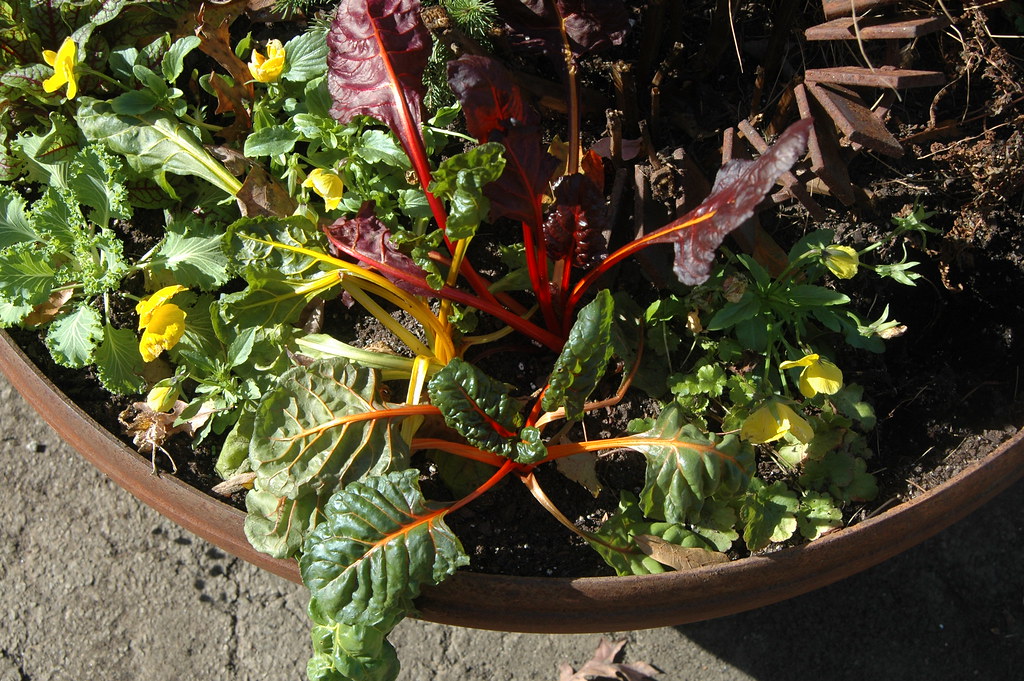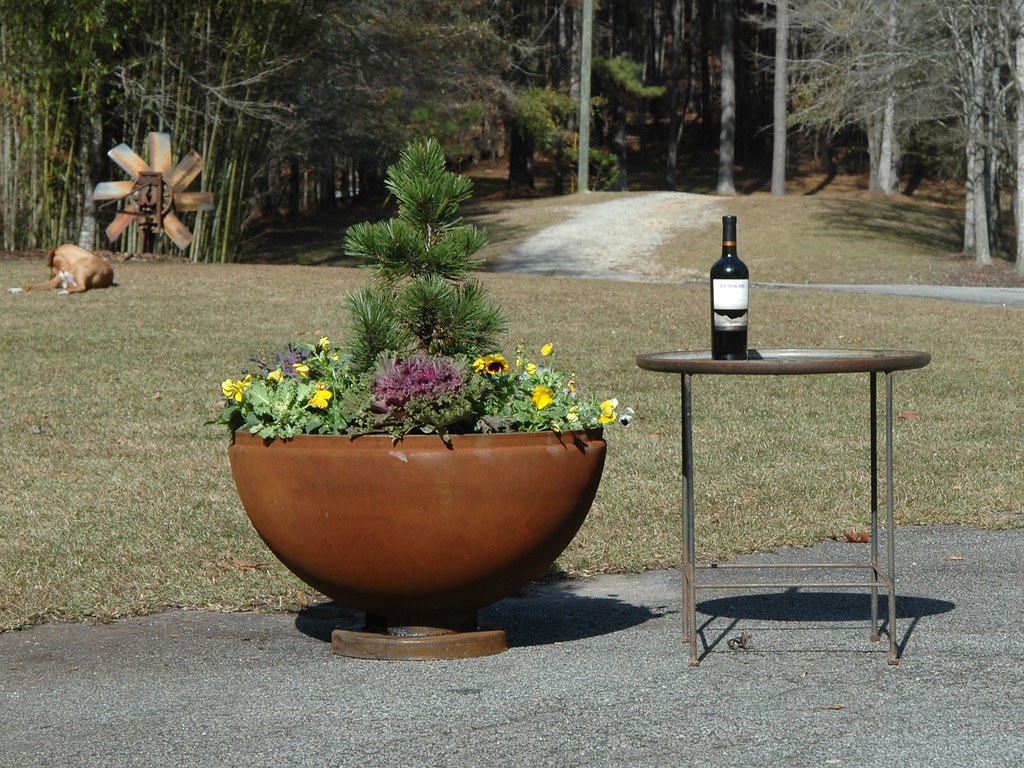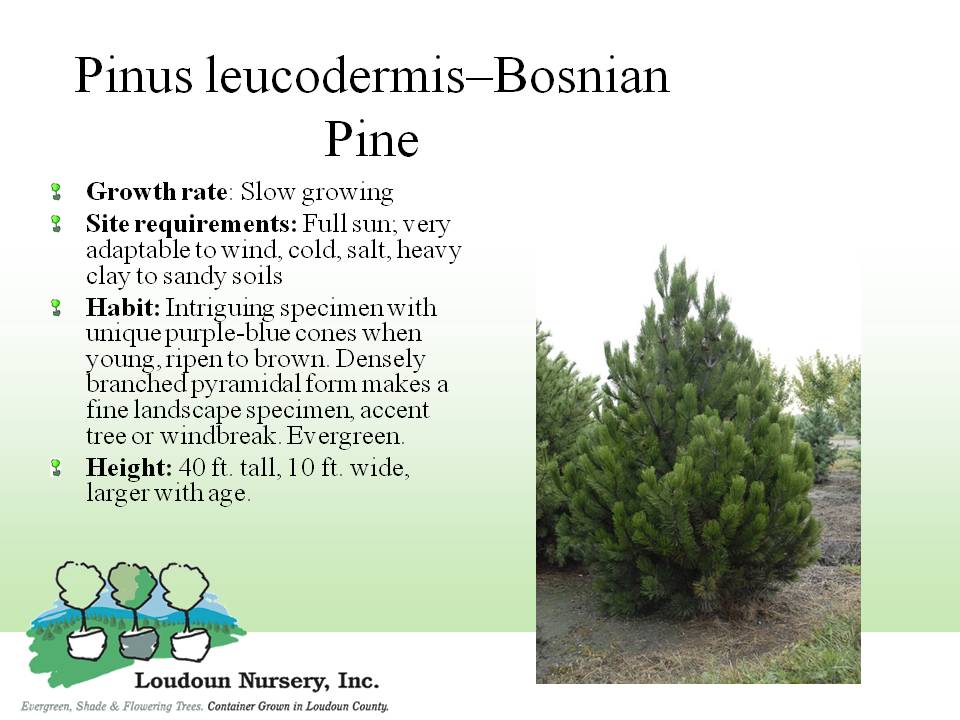jamesp
Cave Dweller 
Member since October 2012
Posts: 36,611
|
Post by jamesp on Nov 25, 2015 6:40:21 GMT -5
Just planted these, will be interesting to see them flush out. Intense color, should be easy to grow.  30 inch hemispherical architectural planter. Supposed to be a fire pit but the Ms. keeps stealing them and planting them. Will advertise them to local Atlanta landscape architects eventually. End table is an old truck wheel retainer rim with galvanized top inserted. Used to sell many of them in many configurations. This one utilizes long bolts for legs with heads down for feet. Found a big box of such bolts at the industrial junkyard. durable outside furniture  |
|
|
|
Post by paulshiroma on Nov 25, 2015 8:50:27 GMT -5
 Applause. Love the planter and table. You're right about the rhubarb ... should look awesome with all that color. EDIT: How long with that pine last in there? Or rather, when will you have to transplant it?
|
|
jamesp
Cave Dweller 
Member since October 2012
Posts: 36,611
|
Post by jamesp on Nov 25, 2015 9:46:40 GMT -5
 Applause. Love the planter and table. You're right about the rhubarb ... should look awesome with all that color. EDIT: How long with that pine last in there? Or rather, when will you have to transplant it? I think the industry calls those black pines. May be a hybrid, but very slow growing. Drought tolerant, and bonsai able. Many conifers here take the hard heat and summer droughts well. Wife says that is a Bosnian Pine, should last 5-10 years in that container. Another dwarf is a Mugo Pine. The voles eat the roots when in ground here, so strictly a container plant here.  Yep, category is black pine, Japanese Black Pine, wicked:  |
|
Fossilman
Cave Dweller 
Member since January 2009
Posts: 20,723 
|
Post by Fossilman on Nov 25, 2015 10:50:13 GMT -5
Liking those colors-WOW!!!
|
|
jamesp
Cave Dweller 
Member since October 2012
Posts: 36,611
|
Post by jamesp on Nov 25, 2015 12:00:12 GMT -5
Liking those colors-WOW!!! orange yellow and red, real intense. Darn things probably got imported from Oregon like half the plants we have out here. |
|
bushmanbilly
Cave Dweller 
Member since October 2008
Posts: 4,719 
|
Post by bushmanbilly on Nov 25, 2015 16:59:57 GMT -5
Nice never seen yellow rhubarb before. Are the leaves poisonous on the yellow too? Insect resistant, never seen a leaf that has been eaten. Should have no problem growing them. Long lived, mine was taken from the one on the farm in 83. The one on the farm was planted in the 20's. Might need a bigger container, at full growth mine is about 4' around. Leaves over a foot wide. Makes great jam when mixed with strawberries or saskatoon berries. If you soak the leaves you make a powerful poison that will kill and keep bugs off other plants. Wash your hands after handling.
|
|
bushmanbilly
Cave Dweller 
Member since October 2008
Posts: 4,719 
|
Post by bushmanbilly on Nov 25, 2015 17:01:11 GMT -5
And pies.
|
|
|
|
Post by Pat on Nov 25, 2015 17:09:20 GMT -5
That rhubarb sure is pretty! A neighbor made us a rhubarb pie. It was pretty and tasty.
Good looking planter and table, too.
|
|
grayfingers
Cave Dweller 
Member since November 2007
Posts: 4,575 
|
Post by grayfingers on Nov 25, 2015 17:25:37 GMT -5
Very nice, James! I do have to say that rhubarb looks allot like Swiss Chard 'Bright Lights'...  |
|
jamesp
Cave Dweller 
Member since October 2012
Posts: 36,611
|
Post by jamesp on Nov 25, 2015 17:27:30 GMT -5
Nice never seen yellow rhubarb before. Are the leaves poisonous on the yellow too? Insect resistant, never seen a leaf that has been eaten. Should have no problem growing them. Long lived, mine was taken from the one on the farm in 83. The one on the farm was planted in the 20's. Might need a bigger container, at full growth mine is about 4' around. Leaves over a foot wide. Makes great jam when mixed with strawberries or saskatoon berries. If you soak the leaves you make a powerful poison that will kill and keep bugs off other plants. Wash your hands after handling. Never knew the leaves were poisonous Billy. When I was a kid I thought the whole plant was poison at the dinner table. Went to see my Grandma up in Pennsylvania and she used elderberries and rhubarb to make pie. Sounds similar to your Saskatoon berry concoction. Either way, I was not going to eat that pie till she persuaded me too taste it. It was all over then, very delicious stuff. Loved rhubarbs ever since. Now why do cold crops grow gargantuan size in cold climates. Stored nutrients ? Our mountain cabbage gets huge, not down here on low land though. |
|
jamesp
Cave Dweller 
Member since October 2012
Posts: 36,611
|
Post by jamesp on Nov 25, 2015 17:30:55 GMT -5
Very nice, James! I do have to say that rhubarb looks allot like Swiss Chard 'Bright Lights'...  Swiss chard is another serious ornamental cold crop here Bill. Amazing foliage. Guessing the both of them would perform well in your territory. |
|
jamesp
Cave Dweller 
Member since October 2012
Posts: 36,611
|
Post by jamesp on Nov 25, 2015 17:31:29 GMT -5
That rhubarb sure is pretty! A neighbor made us a rhubarb pie. It was pretty and tasty. Good looking planter and table, too. I thought about drinking the whole bottle of wine Pat. |
|
grayfingers
Cave Dweller 
Member since November 2007
Posts: 4,575 
|
Post by grayfingers on Nov 25, 2015 17:40:59 GMT -5
Very nice, James! I do have to say that rhubarb looks allot like Swiss Chard 'Bright Lights'...  Swiss chard is another serious ornamental cold crop here Bill. Amazing foliage. Guessing the both of them would perform well in your territory. Yup, I grow Chipman's Canada Red and Valentine varieties. Make wine, pie and Rhubarb crunch/crisp. On one of my grandfather's homesteads the Rhubarb is all that remains... Chard will winter over even here where it gets way below zero. |
|
bushmanbilly
Cave Dweller 
Member since October 2008
Posts: 4,719 
|
Post by bushmanbilly on Nov 25, 2015 19:24:18 GMT -5
Ya I forgot about the wine. Good stuff, mom made a lot of it. Ingestion of rhubarb leaves produces a variety of rhubarb-leaf-poisoning symptoms. This is because of the substance called oxalate found in these toxic-leaves. Watch your dogs. www.petpoisonhelpline.com/poison/rhubarb/www.savor-the-rhubarb.com/rhubarb-leaf-poisoning.htmlRhubarb is an intriguing plant, with edible red stalks and a poison in every large, green leaf. The stems are traditionally used as an ingredient in desserts, but have an even wider range of cooking uses. The leaves, however, kill. The poison in the leaves is oxalic acid, which will stop the human heart if ingested. However, the leaves can also be used to make a natural pesticide that breaks down quickly and disposes of many unwelcome bugs without inhibiting the presence of beneficial bees. Below are two ways to use rhubarb leaves to protect your garden from insects. Rhubarb Spray 1 cup rhubarb leaves 6.5 cups water ¼ cup liquid dish detergent or soap flakes 1 large pot A spray bottle Step 1: Place the rhubarb leaves in the pot and cover them with the water. Step 2: Boil the water and leaves for 20 to 30 minutes. Then remove the pot from the heat and let the contents cool. Step 3: Strain the resulting liquid into a spray bottle. Dispose of the boiled leaves. Step 4: Add the dish detergent and mix the liquid well. Step 5: Spray the resulting liquid on your plants to kill aphids and other disruptive insects. However, do not use rhubarb spray on food bearing plants. The poison will break down quickly, but there is still a risk that the sprayed food will have oxalic acid on them. Step 6: The rhubarb spray will rot, so use it quickly or freeze the mixture to store it. If you store it, be sure to accurately label it as poison. Note—When choosing a soap to add to to your rhubarb pesticide spray, avoid harsh detergents and soaps with a long list of chemicals. The chemicals will damage your plants and contaminate your garden soil. There are garden soaps and biodegradable soaps available that will protect your plants from insects without causing further harm. Also, using a spray of just soap and water can be a useful pesticide. Rhubarb Leaf Protectors for Seedlings Step 1: Save rhubarb leaves when harvesting your rhubarb. Step 2: Slit the rhubarb leaf along the fleshy central vein to create an opening. Step 3: Place the opening in the leaf around the young seedling you wish to protect. The leaf will provide shade to the soil, retain moisture, and provide nutrients while decomposing. These function are in addition to the work the oxalic acid will do repelling insects. Step 4: The leaf should decompose in 3 to 4 weeks. By that time, your seedling will be strong enough to survive on its own. If further insect repelling is needed, use the rhubarb spray described above. However, while the rhubarb leaf protector can be used on food-bearing plants, the spray cannot. |
|
bushmanbilly
Cave Dweller 
Member since October 2008
Posts: 4,719 
|
Post by bushmanbilly on Nov 25, 2015 19:37:02 GMT -5
Nice never seen yellow rhubarb before. Are the leaves poisonous on the yellow too? Insect resistant, never seen a leaf that has been eaten. Should have no problem growing them. Long lived, mine was taken from the one on the farm in 83. The one on the farm was planted in the 20's. Might need a bigger container, at full growth mine is about 4' around. Leaves over a foot wide. Makes great jam when mixed with strawberries or saskatoon berries. If you soak the leaves you make a powerful poison that will kill and keep bugs off other plants. Wash your hands after handling. Never knew the leaves were poisonous Billy. When I was a kid I thought the whole plant was poison at the dinner table. Went to see my Grandma up in Pennsylvania and she used elderberries and rhubarb to make pie. Sounds similar to your Saskatoon berry concoction. Either way, I was not going to eat that pie till she persuaded me too taste it. It was all over then, very delicious stuff. Loved rhubarbs ever since. Now why do cold crops grow gargantuan size in cold climates. Stored nutrients ? Our mountain cabbage gets huge, not down here on low land though. Not sure why they get so big here. Maybe the longer days and mild weather. Rhubarb is the first thing to poke through the ground in spring here. |
|
jamesp
Cave Dweller 
Member since October 2012
Posts: 36,611
|
Post by jamesp on Nov 25, 2015 21:20:25 GMT -5
Cabbage gets 4 times bigger in the mountains. Never thought about longer days you have bushmanbilly. Betting $100 it is the longer days. Collards is the cold crop of choice here. Lots of people run the giant pile of leathery leaves in a clothes washer to wash them(w/out soap and cold water). They are best after a frost hits them. i suppose rhubarb is a staple up your way. |
|
jamesp
Cave Dweller 
Member since October 2012
Posts: 36,611
|
Post by jamesp on Nov 25, 2015 21:31:49 GMT -5
Swiss chard is another serious ornamental cold crop here Bill. Amazing foliage. Guessing the both of them would perform well in your territory. Yup, I grow Chipman's Canada Red and Valentine varieties. Make wine, pie and Rhubarb crunch/crisp. On one of my grandfather's homesteads the Rhubarb is all that remains... Chard will winter over even here where it gets way below zero. Wine ?$#@% Never heard of such. They are chuk full of sugar. Makes sense, all ya need is sugar. Sounds like a crop hangs out for the duration. A perennial veggie, lucky you guys. |
|
jamesp
Cave Dweller 
Member since October 2012
Posts: 36,611
|
Post by jamesp on Nov 25, 2015 21:38:34 GMT -5
bushmanbilly, our weed called poke salad is poisonous if not cooked properly. check out it's medicinal properties, they seem exaggerated: Properties: Pokeweed is edible (cooked) and medicinal. It has a long history of use by Native Americans and in alternative medicine. The young shoots are boiled in two changes of water and taste similar to asparagus, berries are cooked and the resulting liquid used to color canned fruits and vegetables. The root is alterative, anodyne, antiinflammatory, cathartic, expectorant, hypnotic, narcotic and purgative. It is used in the treatment of rheumatoid arthritis, tonsillitis, mumps, glandular fever and other complaints involving swollen glands, chronic catarrh, bronchitis and diseases related to a compromised immune system it has potential as an anti-AIDS drug. Some of the chemical constituents in the plant are triterpenoid saponins, lectins, antiviral proteins and many phytolaccagenic acids, which are not completely understood. New research has revealed that a possible CURE for Childhood Leukemia called (B43-PAP) is found in the common Pokeweed. Anti-B43-pokeweed antiviral protein, B43-PAP, PAP is a pokeweed toxin. The B43 carries the weapon--the PAP--to the leukemia cells. It has been touted as a smart weapon. In one study 15 out of 18 children who had participated had attained remission. The following is part of a repot from Parker Hughes Institute: The two parts of this drug are the B43 antibody (or anti-CD19) and the pokeweed antiviral protein (PAP) immunotoxin, a natural product in the pokeweed plant. B43 is designed to recognize specific B-cell leukemia cells just as natural antibodies attack and recognize germs. When the antibody finds a leukemia cell, it attaches and B43 delivers the other part of the drug, PAP. Inside the cell, PAP is released by the antibody and inactivates the ribosomes that make the proteins the cell needs to survive. With the cell unable to produce proteins, the specific leukemia cell is killed. More than 100 patients have been treated with B43-PAP and shown only minimal side effects. Caution is advised as the whole plant, but especially the berries, is poisonous raw, causing vomiting and diarrhea. A beautiful red ink and a dye are obtained from the fruit. The rootstock is rich in saponins and can be used as a soap substitute. PS I think oxalic acid in refined form is used to soak rocks in to get them clean. Hy. Peroxide will sure make you barf, dogs too. Been there done that. To get out of school..
|
|